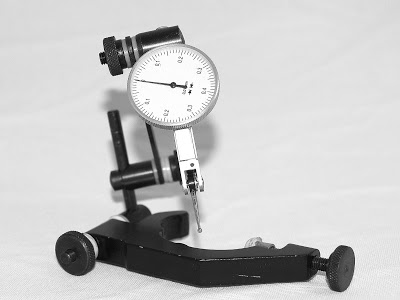Dial Indicator
A dial test indicator is used for so many things, that listing them all doesn't make sense. For example, accurately squaring your milling vice without one is next to impossible. And starting around €25 it's one of the first accessories you should buy.
The cheap Chinese versions are typically sold in a kit with a magnetic stand. Do get such a kit, because it's cheap and because the stand is nice to have for other things. But instead of using the dial test indicator with the magnetic stand, get an Indicol holder and mount it in that.

The Indicol holder makes it easy to attach the dial test indicator to just about any tool holder mounted in the mill spindle, and this arrangement is by far the best way to square a milling vice to the table and tram the mill column. Those two applications alone, make the Indicol holder worth getting, but it has numerous other uses.
And it's cheap! Just €15 ($20) for the Indicol holder, which really makes me wonder why there are no kits including one of these.
Dial test indicators have a swivel lever arm, whereas a dial indicator has a plunge lever. I find more different uses for the dial test indicator and so my recommendation would be to get one of those before you get a dial indicator. However, in setups they are interchangeable and so personal preference comes into play.
An excellent resource for everything related to dial indicators is Long Island Indicator Service that specialize in servicing [quality] dial indicators. Dial indicators are high precision mechanical instruments that need maintenance, and the high cost warrant repairs rather than replacements. Their focus is obviously on quality indicators, and not the cheap Chinese tools, but they have a lot of good information, and since a "quality" dial test indicator starts at €130 ($170), it's one of the accessories where many will opt for the "real thing".
blog comments powered by Disqus
Published
Tags
Related Posts
- Choosing A Mill
- DRO Mount (Y-axis) on Sieg SX3
- DRO Mount (X-axis) on Sieg SX3
- Awesome, Inexpensive, Machine Tool Light
- Simple Color Response Test (Method & Results)